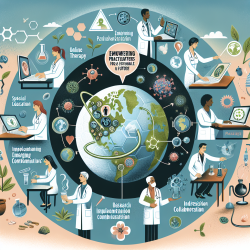Embracing Technology for Transformative Speech Therapy Outcomes
In today's rapidly evolving world, technology has become an integral part of our lives, influencing various sectors, including education and healthcare. For speech language pathologists (SLPs) working with children, especially those with autism, the integration of technology can feel both overwhelming and promising. As we navigate this digital landscape, it is crucial to focus on data-driven approaches that not only address the mental health and communication needs of children but also inspire confidence in their caregivers.
The Role of Online Therapy in Modern Speech Language Pathology
Online therapy services, like those provided by TinyEYE, are revolutionizing how we approach speech therapy. These platforms offer a unique blend of accessibility and effectiveness, ensuring that children receive consistent support, regardless of geographical barriers. This is particularly beneficial for children with autism, who may require specialized interventions tailored to their unique communication challenges.
Research indicates that online speech therapy can be as effective as in-person sessions. According to a study published in the International Journal of Telerehabilitation, children receiving online therapy showed significant improvements in their speech and language skills, comparable to those attending traditional face-to-face sessions. This evidence-based approach ensures that every session is rooted in proven strategies, maximizing the potential for positive outcomes.
Benefits of Technology in Speech Therapy
- Flexibility and Convenience: Online therapy sessions can be scheduled at times that suit the family's routine, reducing stress and making it easier for children to engage in therapy.
- Access to Specialists: Families can connect with expert SLPs who specialize in autism and other communication disorders, regardless of their location.
- Engaging Tools: Interactive digital tools and resources can make therapy sessions more engaging and enjoyable for children, enhancing their learning experience.
Creating a Supportive Environment for Success
While technology offers numerous benefits, the role of caregivers in a child's therapy journey cannot be overstated. As SLPs, it is our responsibility to equip parents with the knowledge and tools they need to support their child's development. This includes providing guidance on how to use digital resources effectively and fostering a home environment conducive to learning.
Parents can play an active role by:
- Participating in therapy sessions to understand techniques and strategies used by the therapist.
- Encouraging practice of speech and language skills during everyday activities.
- Providing positive reinforcement and celebrating small victories to boost the child's confidence.
Looking Ahead: A Brighter Future for Children's Communication
As we continue to embrace technology in speech therapy, the possibilities for improving children's communication skills are endless. By combining the power of digital tools with the expertise of skilled SLPs, we can create a future where every child has the opportunity to express themselves clearly and confidently.
For SLPs feeling lost in this digital transition, remember that the ultimate goal is to empower young voices. By staying informed and leveraging technology effectively, we can inspire and create lasting change in the lives of children and their families.










